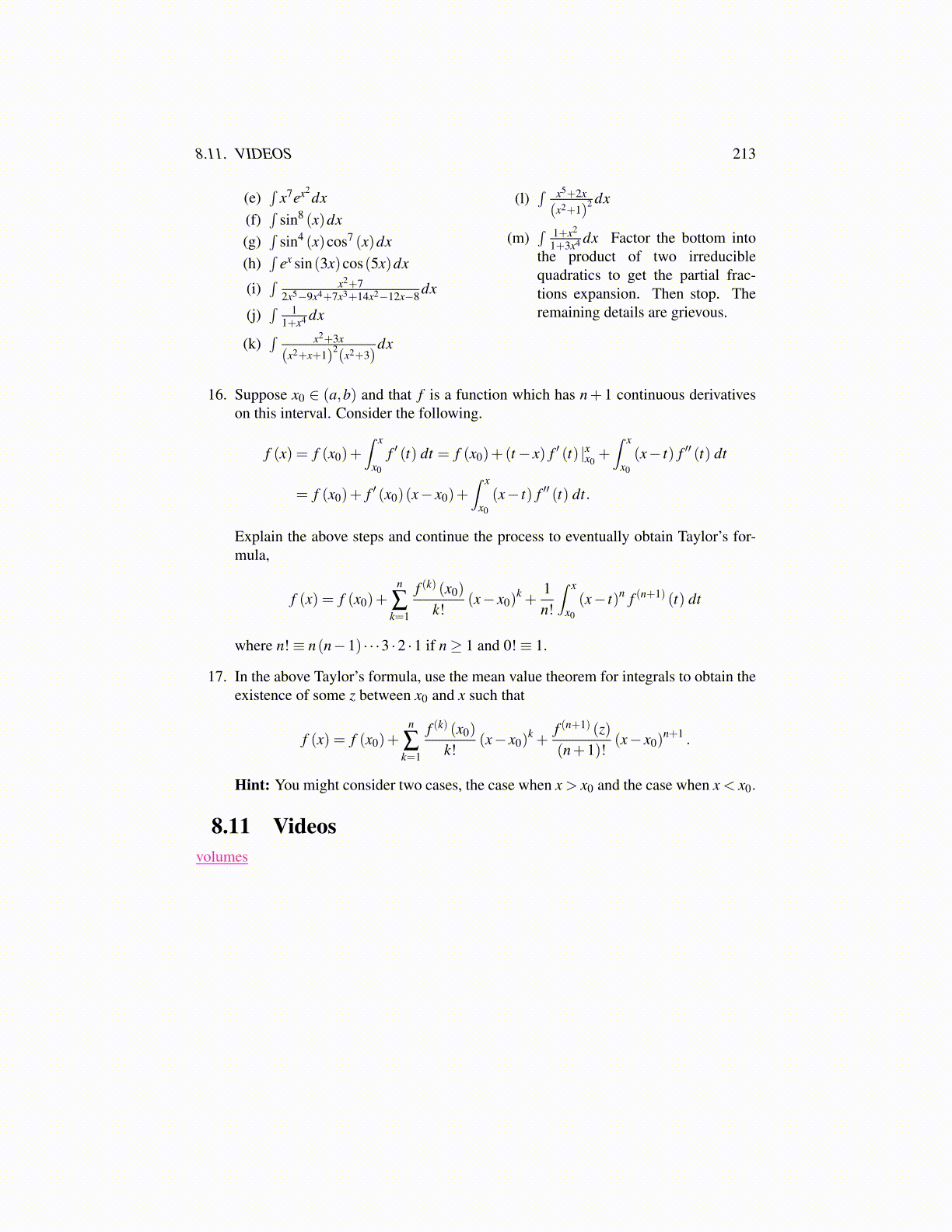
8.11. VIDEOS 213
(e)∫
x7ex2dx
(f)∫
sin8 (x)dx(g)
∫sin4 (x)cos7 (x)dx
(h)∫
ex sin(3x)cos(5x)dx
(i)∫ x2+7
2x5−9x4+7x3+14x2−12x−8 dx
(j)∫ 1
1+x4 dx
(k)∫ x2+3x
(x2+x+1)2(x2+3)
dx
(l)∫ x5+2x
(x2+1)2 dx
(m)∫ 1+x2
1+3x4 dx Factor the bottom intothe product of two irreduciblequadratics to get the partial frac-tions expansion. Then stop. Theremaining details are grievous.
16. Suppose x0 ∈ (a,b) and that f is a function which has n+ 1 continuous derivativeson this interval. Consider the following.
f (x) = f (x0)+∫ x
x0
f ′ (t) dt = f (x0)+(t − x) f ′ (t) |xx0+∫ x
x0
(x− t) f ′′ (t) dt
= f (x0)+ f ′ (x0)(x− x0)+∫ x
x0
(x− t) f ′′ (t) dt.
Explain the above steps and continue the process to eventually obtain Taylor’s for-mula,
f (x) = f (x0)+n
∑k=1
f (k) (x0)
k!(x− x0)
k +1n!
∫ x
x0
(x− t)n f (n+1) (t) dt
where n! ≡ n(n−1) · · ·3 ·2 ·1 if n ≥ 1 and 0! ≡ 1.
17. In the above Taylor’s formula, use the mean value theorem for integrals to obtain theexistence of some z between x0 and x such that
f (x) = f (x0)+n
∑k=1
f (k) (x0)
k!(x− x0)
k +f (n+1) (z)(n+1)!
(x− x0)n+1 .
Hint: You might consider two cases, the case when x > x0 and the case when x < x0.
8.11 Videosvolumes